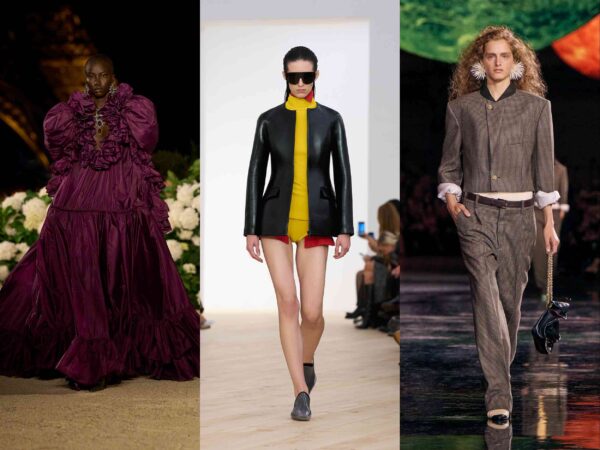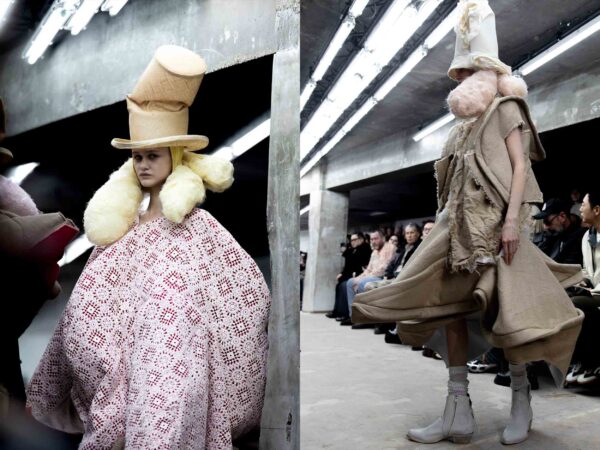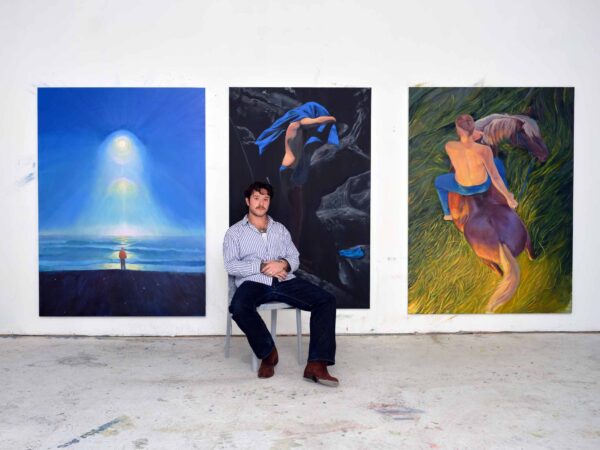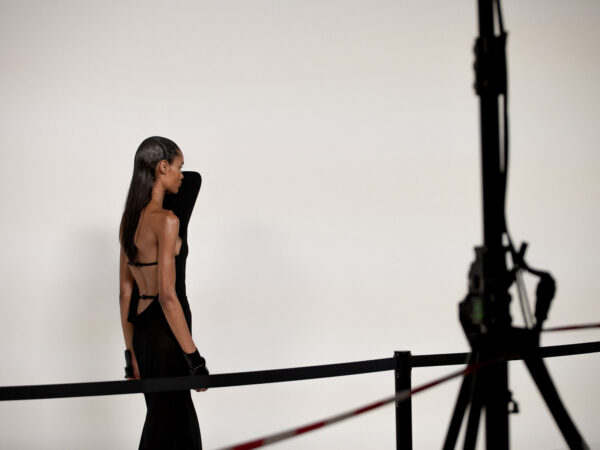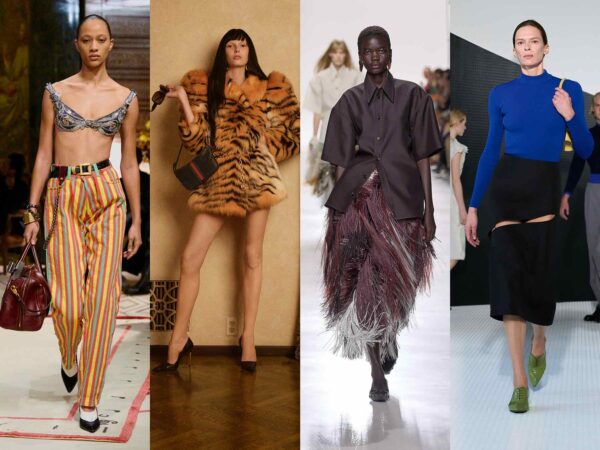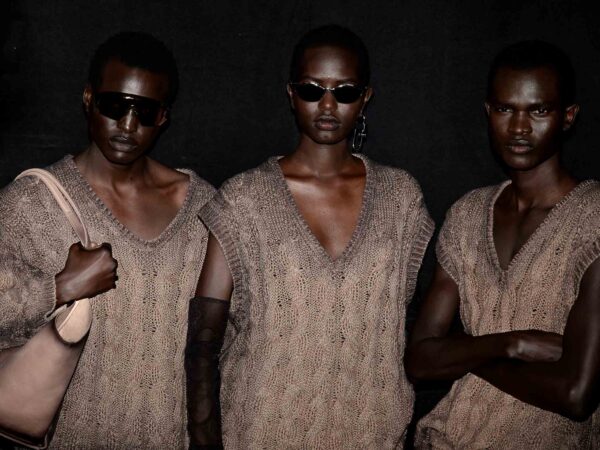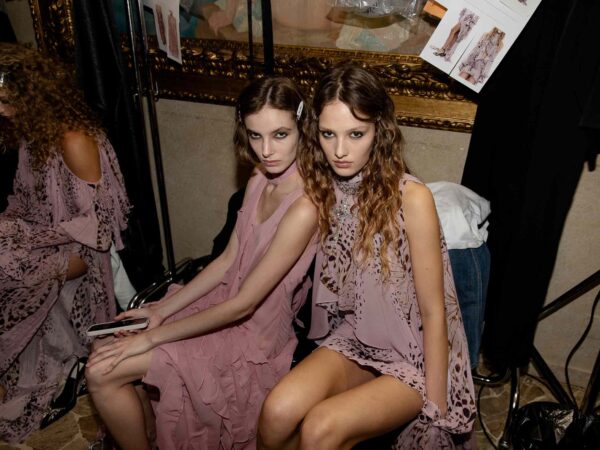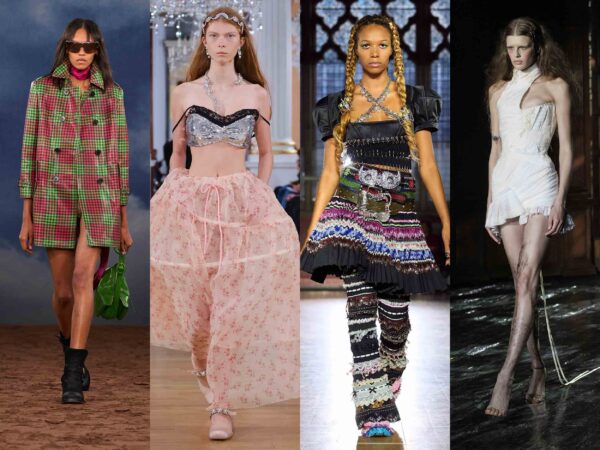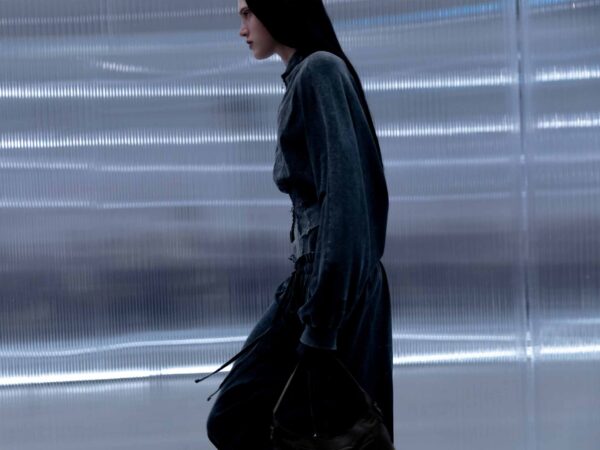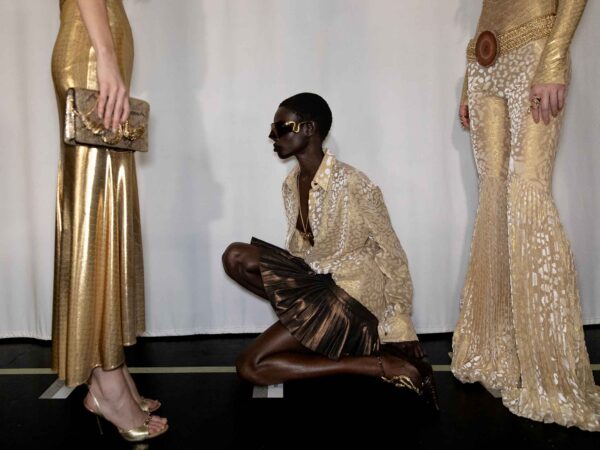
The fashion journalist extraordinaire sits down with Document to discuss the evolution of print journalism, Central Saint Martins, and of course, her pet rabbits
Katharine Zarrella thought she was going to be a politician before she became a leading voice in fashion criticism. “Fashion is the easiest way to understand what everyone is doing and why,” she says, and it’s true: the clothing of an era exemplifies its constellation of tastes, reflecting the social, economic, and political changes of the time. In the 2020s, that means clothes are often online-first, prepped for “get ready with me” videos and sponsored content posts. But fashion never dropped the mirror; the conditions it reflects today are those blue-light-lit users find themselves under. According to Zarrella, whose early days at Style.com and Women’s Wear Daily and most recently as Fashion Director at The Wall Street Journal’s Off-Duty beat, online media formats may be ever-evolving, but the craving for quality sartorial analysis is everlasting—social media is not the enemy, but a reality to be embraced in a changing fashion landscape. Creative criticism will always reign supreme, regardless of the platform.
Armed with an enviable closet of archive McQueen and at least 300 hats, Zarella is not only a rare breed of fashion critics with historian-level personal collections, but an avid proponent of savoring fashion journalism in a sea of online style content. In a conversation with Maya Kotomori, Zarrella reminisces about Central Saint Martins, what makes a great piece of writing, and of course, her pet rabbits.
Maya Kotomori: How did you get your start in fashion?
Katharine Zarrella: I always loved fashion—I would wear expressive pieces even when I was little. My mom was very chic and she introduced me to this whole world. I thought I was going to be a lawyer, and then, like, a senator, but obviously, that’s not what happened. I went to college for political science. But then I serendipitously ended up at an internship W magazine and Women’s Wear Daily. I had the most incredible editor in the world who told me that fashion was a mirror for everything that was going on in the economy, in politics, socially, and culturally. I was like, This is what I’m doing for the rest of my life.
I graduated during the recession and every publishing house was on a hiring freeze. So I decided that I would just go to Paris after college and study fashion journalism and see what I could do. I met my best friend there. I met my mentor there. I started freelancing for a vintage shop. When I got back to New York, the people I met in Paris helped me start to freelance. And eventually, I met an editor at a party that my friend brought me to. I was talking about how I thought there was too much focus on celebrity in fashion, just like, ranting. I was 22—and I was talking way too much. And this guy said, ‘Do you want to write for me?’ And I said, ‘Absolutely, who do you work for?’ It was Chris Bollen, one of the editors of Interview. I got home that night at like one in the morning, and immediately sent my portfolio.
I started freelancing and writing for Style.com. Then I went to grad school at Central Saint Martins in London, which was basically Hogwarts for fashion. It was the most amazing thing. When I was there, I wrote for everyone and their mother—anyone who would take me, really. When I got back from New York, I went to work for Style.com. And the rest is, well, the rest of my life.
“But I still think that there’s a place for old-school written fashion journalism. There’s always going to be somebody who wants to sit down and read.”
Maya: What do you think the role of fashion journalism is today? You mentioned earlier seeing fashion as holding up a mirror to society, and I’m curious—what do you think fashion mirrors today?
Katharine: I think fashion mirrors what it’s always mirrored, and it’s reflective of more parts of society than it ever has been. Because of the internet, more people can see the fashion that speaks to and is worn by various cultures and niche groups and subcultures than ever before. In the ’80s, say, you were seeing all this amazing fashion coming out of Blitz club in London and the underground scene there. Not that many people would see it frequently; it’s something that we look back on because there are so many iconic characters that came out of there: Galliano and Steven Jones. It almost gives people permission, I guess, to be more expressive and experimental with fashion.
The role of fashion journalism is more difficult. And I think I’m still trying to figure that out right now. When I was in grad school, it was the beginning of social media and the blogger era, and I was very anti-social media. I was a die-hard fan of Cathy Horyn and Sarah Mower and Christina Binkley. I was in the mindset that fashion criticism and writing that comes from an informed perspective is so important. I think that fashion is being analyzed by different people in different formats today that are all going to be equally important and equally remembered as resources in the future. But I think that fashion journalism is still important, because it comes from a perspective of understanding the history of fashion and puts them in context socially and culturally for readers. That’s not to say that some of the things that we’re seeing on social media aren’t important or appealing, you just can’t necessarily get strong information from only that. I think fashion journalism just means more now, and encompasses more things than it did perhaps when I started a billion years ago.
Maya: Do you think that social media is the future of fashion journalism? Like, do you see major magazines pivoting solely to platforms like this?
Katharine: I think there’s going to be more of a shift to social media and other digital formats that we don’t even know of yet because perhaps they don’t exist. But I still think that there’s a place for old-school written fashion journalism. There’s always going to be somebody who wants to sit down and read. That becomes more of a luxury, maybe you’re not going to sit down every morning to read the dispatch of Women’s Wear Daily (as much as I love Women’s Wear Daily). Maybe instead, you have a beautiful publication like Document that lives on your coffee table, and it’s a real indulgence that you get to lose yourself in, and almost remove yourself from that social media world and just gobble something up that feels incredibly substantial. I do think that there’s still a place for those really delicious special publications or just pieces of writing that feel nourishing to your mind and soul. It’s a break from that constant barrage of information and images that we get in the rest of our lives.
Maya: Full-fat content, fashion journalism.
Katharine: Yes.
Maya: Tell me about fashion Hogwarts. What are some of the most magical memories you have from Central Saint Martins?
Katharine: I have so many, oh my gosh. My dearest friends and I, we would stay up all night writing and talking. We’d all go to Paris together to freelance during fashion week and share these tiny little apartments. We were all on deadline for various publications, so it would just be, like, 15 days of not sleeping in the tiniest apartment in the Marais.
I think the most magical part of it, though, was meeting all these people from all around the world who were interested in fashion—because they all were coming at it from such different perspectives. For part of my course, I had to shadow a designer. The person I shadowed was this talented designer Andrei Amado. Craig Green was the younger designer helping Andrei because he was a first-year in the MA program like myself. We were working with synthetic goat hair, and I came in one day to help dye it yellow. Craig and I ran all over London looking for different dyes and such; I was wearing something ridiculous as per usual. And Craig looked at me and he was like, ‘Katharine, no, you can’t go stand over a vat of yellow dye wearing a giant hat with a veil.’ So he put a smock on me, and we went to work. I was in thigh-high stiletto boots trying to stir this fur and then blow dry it at midnight in Central Saint Martins. I will never forget it.
“Fashion can be very serious, but it can also be very playful and silly and lovely.”
Maya: How would you describe your personal style in a sentence? Would you even describe your personal style, or would you just call it, you know, you being yourself?
Katharine: I usually tell people that I dress like a gothic Cirque du Soleil clown. I always say that you can tell if I woke up on the wrong side of the bed because the worse I feel in the morning the more outrageous I’ll dress. It just is a really joyful part of my life. I love playing with Comme des Garçons, vintage Alaïa, and hats. I have about 300 hats spanning over 200 years. Like, yes, this is a career, but also it is my soul.
Maya: Would you say that you have an archive, a closet, or both?
Katharine: I have an archive stuffed in a New York closet. My apartment in New York is full of mannequins and they’re wearing Comme des Garçons runway, and I have pet rabbits who like to sleep under the runway gowns. Then I have a bunch of disembodied heads that are wearing hats. My apartment’s frightened a lot of people but I love it.
Maya: Do you ever dress your rabbits in any of your accessories?
Katharine: My first bunny Mssr. François FrouFrou…Piers Atkinson in London made him a little top hat with a white feather. Now the hat sits on top of his little box of ashes because he died during the pandemic. Coco, I tried to dress up in Chanel pearls because, you know, Coco Chanel—but she did not like that, so that was a one-time thing.
Maya: What’s a truly unforgettable fashion week moment for you?
Katharine: I don’t even know where to begin. My first ever runway show was Dries Van Noten in Paris—probably 2005, I think. I was freelancing for a publication called the Dossier Journal, not to be confused with Document Journal, which did not exist yet. [Laughs] And I was so excited to be there—I was full of piss and vinegar. And I went backstage to go interview Dries after the show, which was so stunning and gorgeous. You could just walk backstage without coordinating with PR for 15 months before the show back then. I went up to Dries, he was talking to Grace Coddington and Anna Wintour, and I just started asking him these very serious fashion journalist questions because I was a very serious fashion journalist. Then my blouse pops open, and buttons just fall on the floor. I’m thinking, Well, this is uncomfortable. And I didn’t know what to do! But he was so gracious, he just didn’t say anything and kept answering my questions like a complete professional, like the brilliant artist he is. I was mortified—that was my first really big backstage interview and I turned out accidentally half naked.
There was one season that I was invited to go backstage and say hello to Rei Kawakubo after a Comme des Garçons show. I’d interviewed her before, so I don’t know why I was so nervous. I went backstage and shook her hand, and said, ‘It was a really beautiful collection.’ And then Adrian [Joffe] her husband was like, ‘Rei look, she’s wearing a look from the last collection.’ I got so nervous that I did a twirl, curtsied, and then ran out of there.
Maya: In that situation I think the only answer is to run away. [Laughs]. That’s what makes a good fashion journalist though, is being able to ask the hard-hitting questions, but also to have somewhat of a sense of humor.
Katharine: Fashion can be very serious, but it can also be very playful and silly and lovely. And I think that you have to always keep those different sides of it in mind and in perspective, because if you get too serious it becomes boring.


